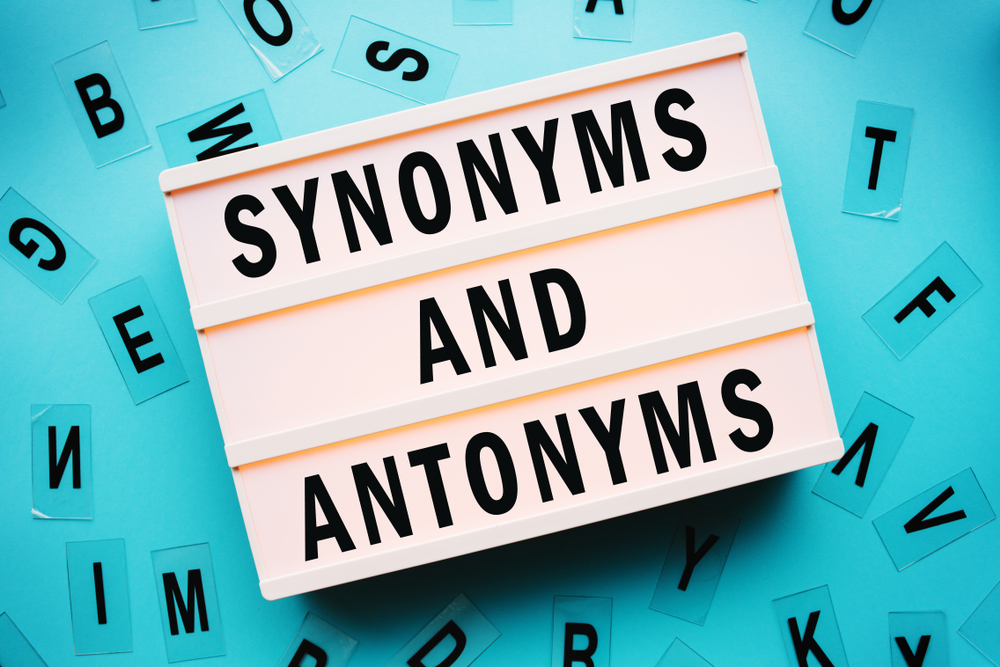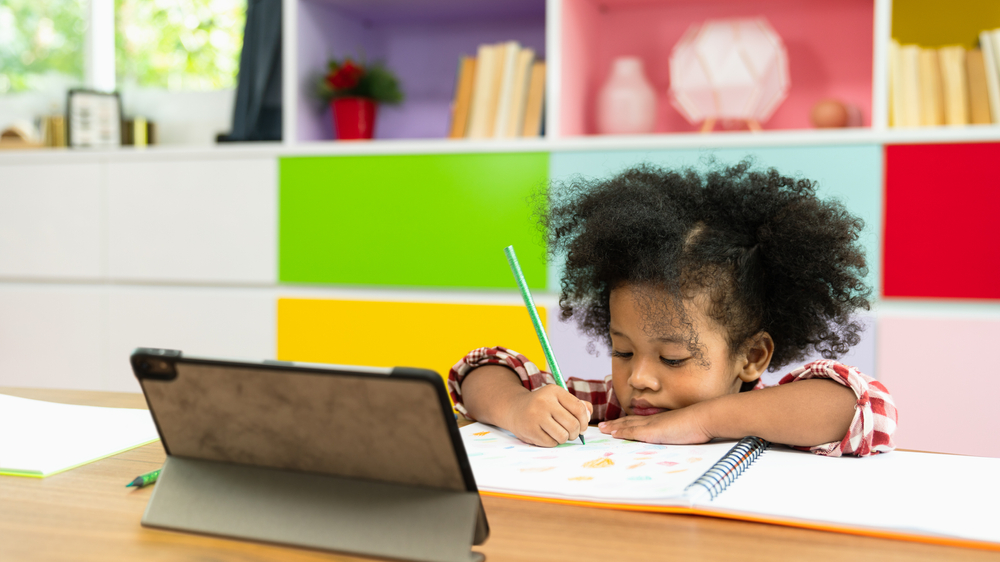Visual interpretation Normal Reading Fiction Worksheets for Ages 4-7
4 filtered results
-
From - To
Discover our engaging "Visual Interpretation Normal Reading Fiction Worksheets" designed for children ages 4-7! These worksheets foster critical thinking and comprehension by encouraging young learners to illustrate and interpret stories visually. With colorful characters and imaginative scenarios, children can enhance their understanding of narrative elements while refining their artistic skills. Our materials incorporate fun activities that stimulate creativity, making reading an enjoyable experience. Perfect for early grade classrooms or at-home learning, these worksheets lay a strong foundation for literacy while promoting communication skills. Explore the world of fiction with us and watch your child thrive through visual storytelling!
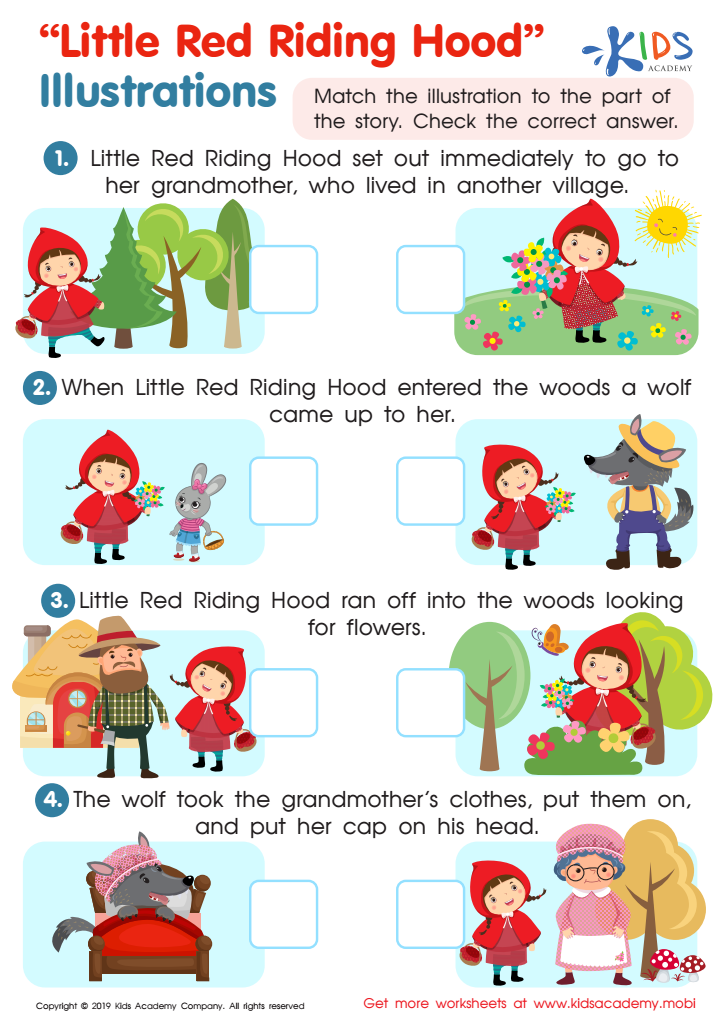

Little Red Riding Hood: Illustrations Worksheet
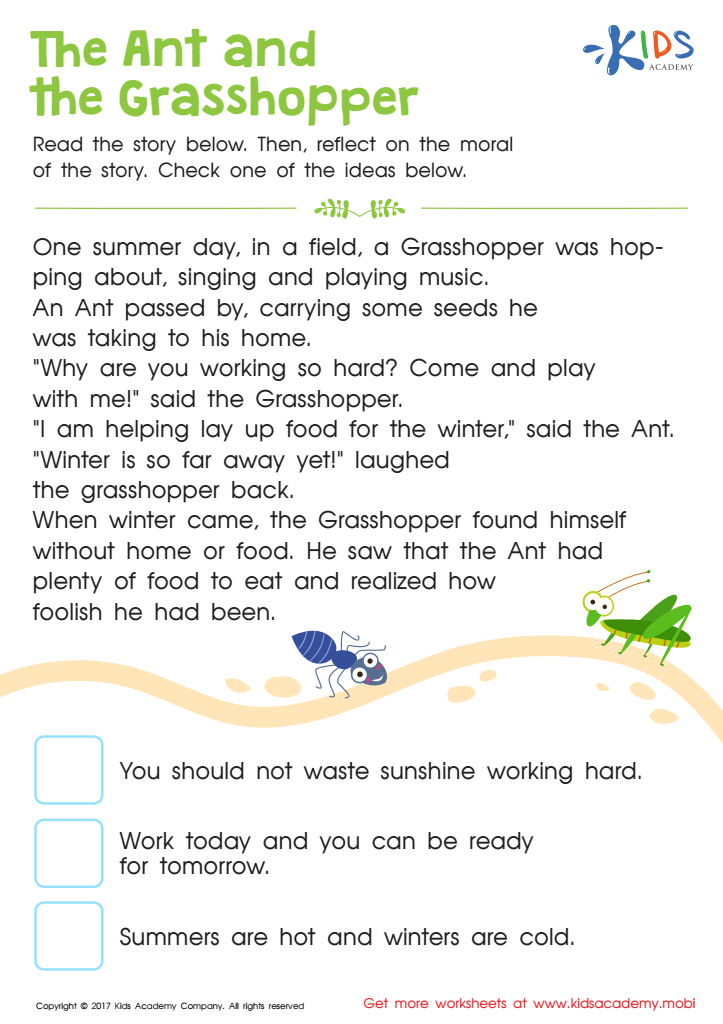

The Ant and The Grasshopper Printable
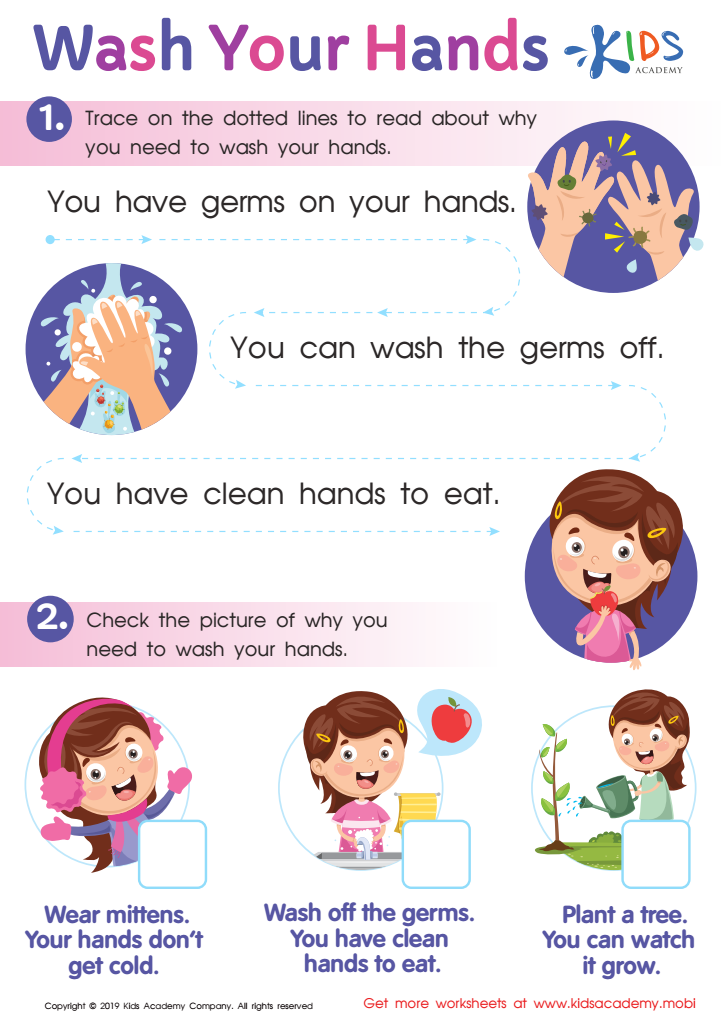

Wash Your Hands Worksheet
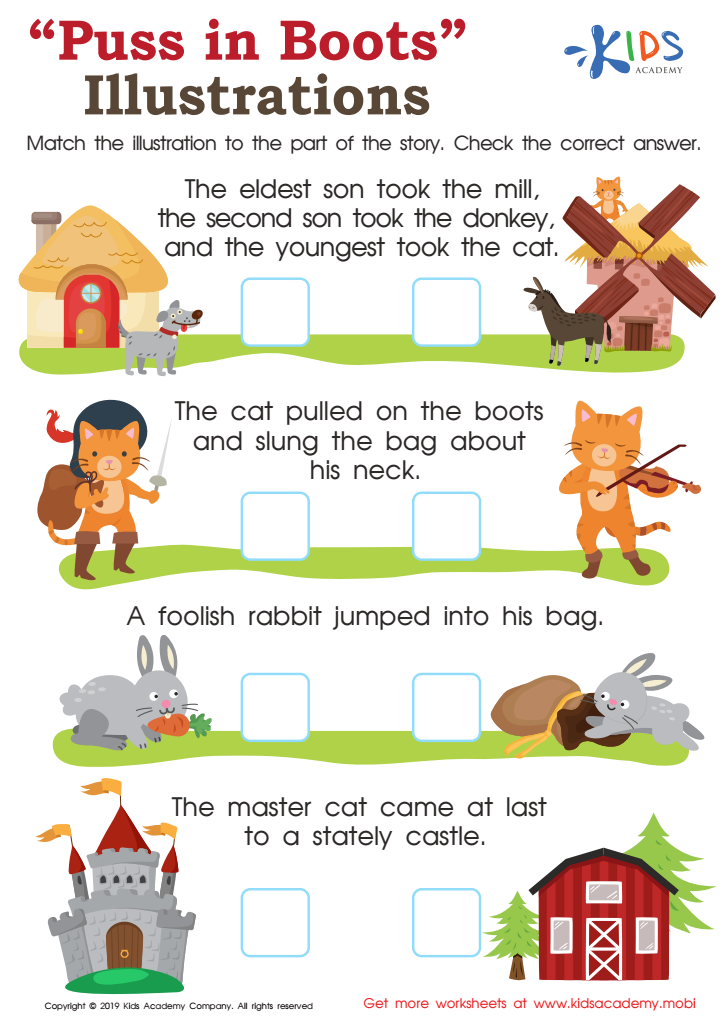

Puss in Boots Illustrations Worksheet
Visual interpretation in reading, particularly for children aged 4-7, is crucial for several reasons. At this developmental stage, children are beginning to grasp the concept of storytelling and narrative structure. Visual elements, such as illustrations in storybooks, serve as vital tools for enhancing comprehension. They help children make connections between text and imagery, fostering a deeper understanding of the story.
Parents and teachers should care about these aspects because visual literacy complements traditional reading skills. Young children often rely on pictures to interpret narratives, making sense of the story even before they can read fluently. Engaging with visual cues can encourage imagination and critical thinking as children learn to decipher emotions, settings, and actions depicted in illustrations.
Furthermore, visual interpretation supports language development. When children discuss illustrations, they practice verbal skills, vocabulary expansion, and narrative skills—key components of literacy. This early exposure builds foundational skills that transition smoothly into more complex reading and comprehension tasks later on.
By prioritizing visual interpretation in early reading experiences, parents and teachers lay the groundwork for motivated, confident readers who are equipped to navigate both words and images throughout their educational journey.

 Assign to My Students
Assign to My Students






